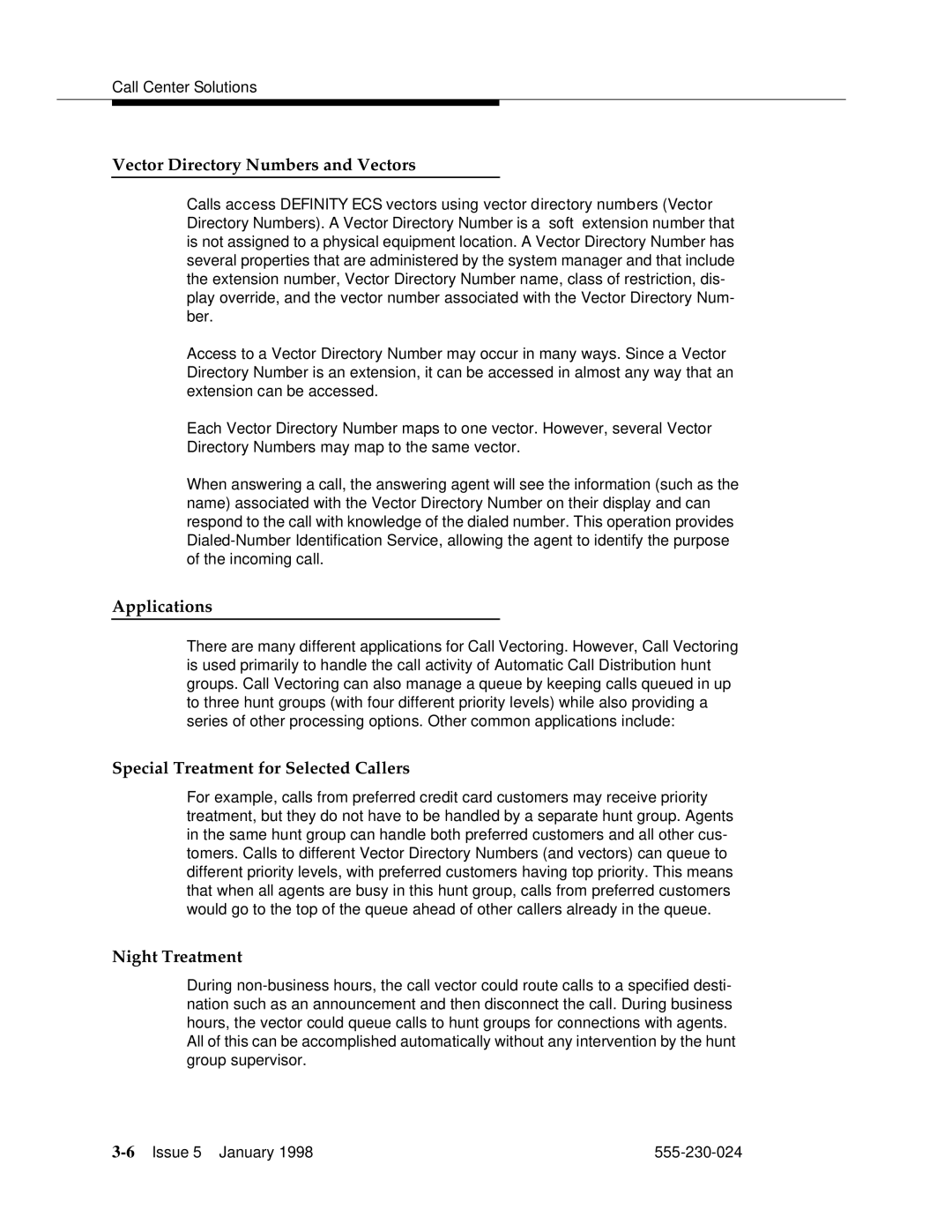
Call Center Solutions
Vector Directory Numbers and Vectors
Calls access DEFINITY ECS vectors using vector directory numbers (Vector Directory Numbers). A Vector Directory Number is a “soft” extension number that is not assigned to a physical equipment location. A Vector Directory Number has several properties that are administered by the system manager and that include the extension number, Vector Directory Number name, class of restriction, dis- play override, and the vector number associated with the Vector Directory Num- ber.
Access to a Vector Directory Number may occur in many ways. Since a Vector Directory Number is an extension, it can be accessed in almost any way that an extension can be accessed.
Each Vector Directory Number maps to one vector. However, several Vector Directory Numbers may map to the same vector.
When answering a call, the answering agent will see the information (such as the name) associated with the Vector Directory Number on their display and can respond to the call with knowledge of the dialed number. This operation provides
Applications
There are many different applications for Call Vectoring. However, Call Vectoring is used primarily to handle the call activity of Automatic Call Distribution hunt groups. Call Vectoring can also manage a queue by keeping calls queued in up to three hunt groups (with four different priority levels) while also providing a series of other processing options. Other common applications include:
Special Treatment for Selected Callers
For example, calls from preferred credit card customers may receive priority treatment, but they do not have to be handled by a separate hunt group. Agents in the same hunt group can handle both preferred customers and all other cus- tomers. Calls to different Vector Directory Numbers (and vectors) can queue to different priority levels, with preferred customers having top priority. This means that when all agents are busy in this hunt group, calls from preferred customers would go to the top of the queue ahead of other callers already in the queue.
Night Treatment
During
